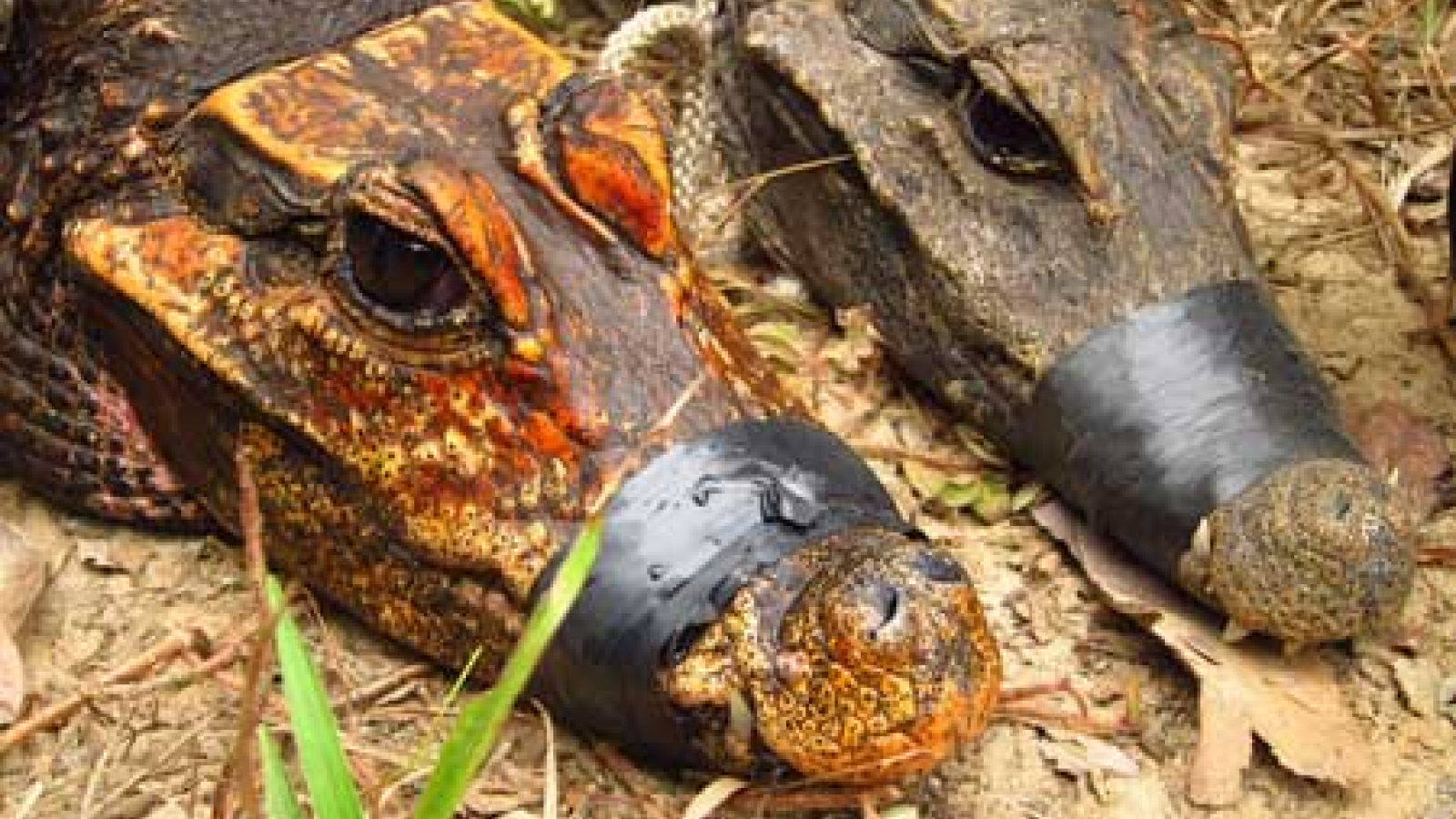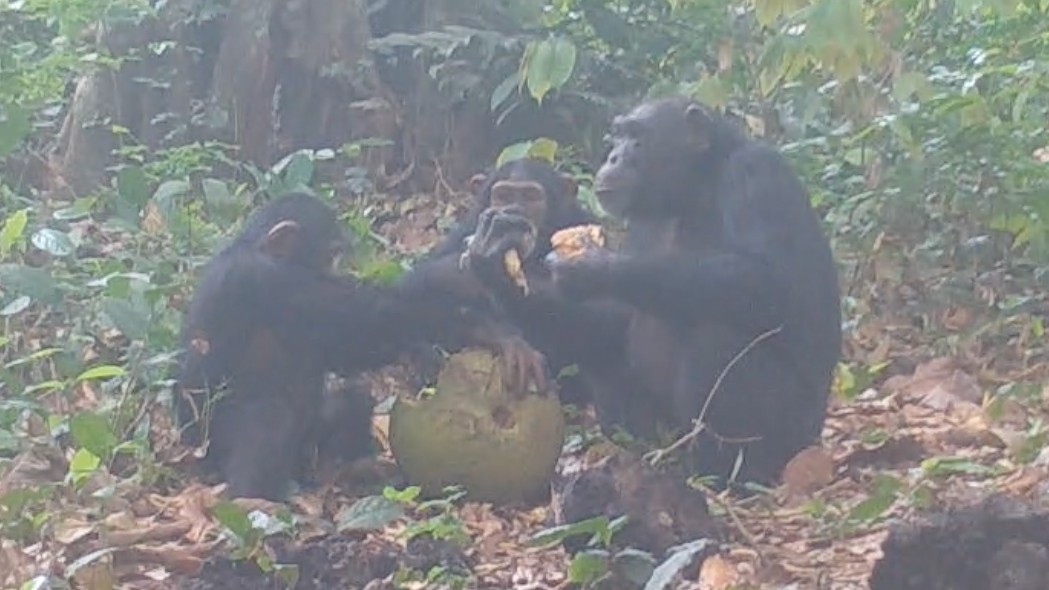Orange dwarf cave crocodiles: The crocs that crawled into a cave, ate bats, and started mutating into a new species
The skin of dwarf crocodiles found living in a cave in Gabon is turning orange from swimming in guano. It's unclear how long they've been down there, but genetic research indicates they may be morphing into a new species.

Name: Cave-dwelling dwarf crocodiles (Osteolaemus tetraspis)
Where it lives: Abanda cave system, Ogooue-Maritime Province, Gabon
What it eats: Cave crickets and bats
Why it's awesome: Deep inside one of Gabon's cave systems lives an unusual population of orange dwarf crocodiles. They live in complete darkness, feast on bats and swim in liquid guano (aka bat poop.)
It's unknown how many crocodiles are living in these caves, or when they adopted this subterranean lifestyle, but they may have been down there for thousands of years — and scientists say they may even be in the process of evolving into a new species.
The cave-dwelling crocodiles were only studied for the first time in 2010, and a 2016 study that compared them to their forest-dwelling counterparts showed a number of differences between the two. Their diets are very different, with the cave crocs feeding almost exclusively on the bounty of crickets and bats that cling to the cave walls. They found the cave crocodiles were generally in better condition than those living in the forest, which the team say is likely due to the abundance of prey available and a lack of predators.
They suggest the cave crocodiles lay their eggs at the mouth of the caves, then the juveniles venture into the darkness. Once they reach adulthood, it's thought they barely leave the caves again.
Sign up for the Live Science daily newsletter now
Get the world’s most fascinating discoveries delivered straight to your inbox.
Orange skin and genetic changes
The unusual orange skin seen on adult crocodiles may be the result of their time swimming in bat guano, which is rich in urea, lead author Matthew Shirley, a conservation biologist from Florida International University, told National Geographic in 2018. Over time, this exposure appears to cause chemical bleaching of the crocodiles' skin, the study authors wrote.
Intriguingly, genetic analysis of the crocodiles — which has not been published — suggests the orange cave crocodiles may be mutating, according to a Guardian article in 2018. Researchers told the newspaper that one haplotype (a group of DNA variants inherited from a parent) found in the cave crocs wasn't present in the forest crocodiles. "The [crocodiles in the] caves of Abanda stand out as an isolated genetic group," study co-author Richard Oslisly, a researcher at France's Institute of Research for Development, told the Guardian.
This genetic change is evidence that the cave crocodiles are evolving into a new species. "As a result of that isolation and the fact that few individuals come in or go out, they're in the process of [becoming] a new species," Shirley told National Geographic. "Whether that happens soon or not is anyone's guess."
Crocodile quiz

Hannah Osborne is the planet Earth and animals editor at Live Science. Prior to Live Science, she worked for several years at Newsweek as the science editor. Before this she was science editor at International Business Times U.K. Hannah holds a master's in journalism from Goldsmith's, University of London.









